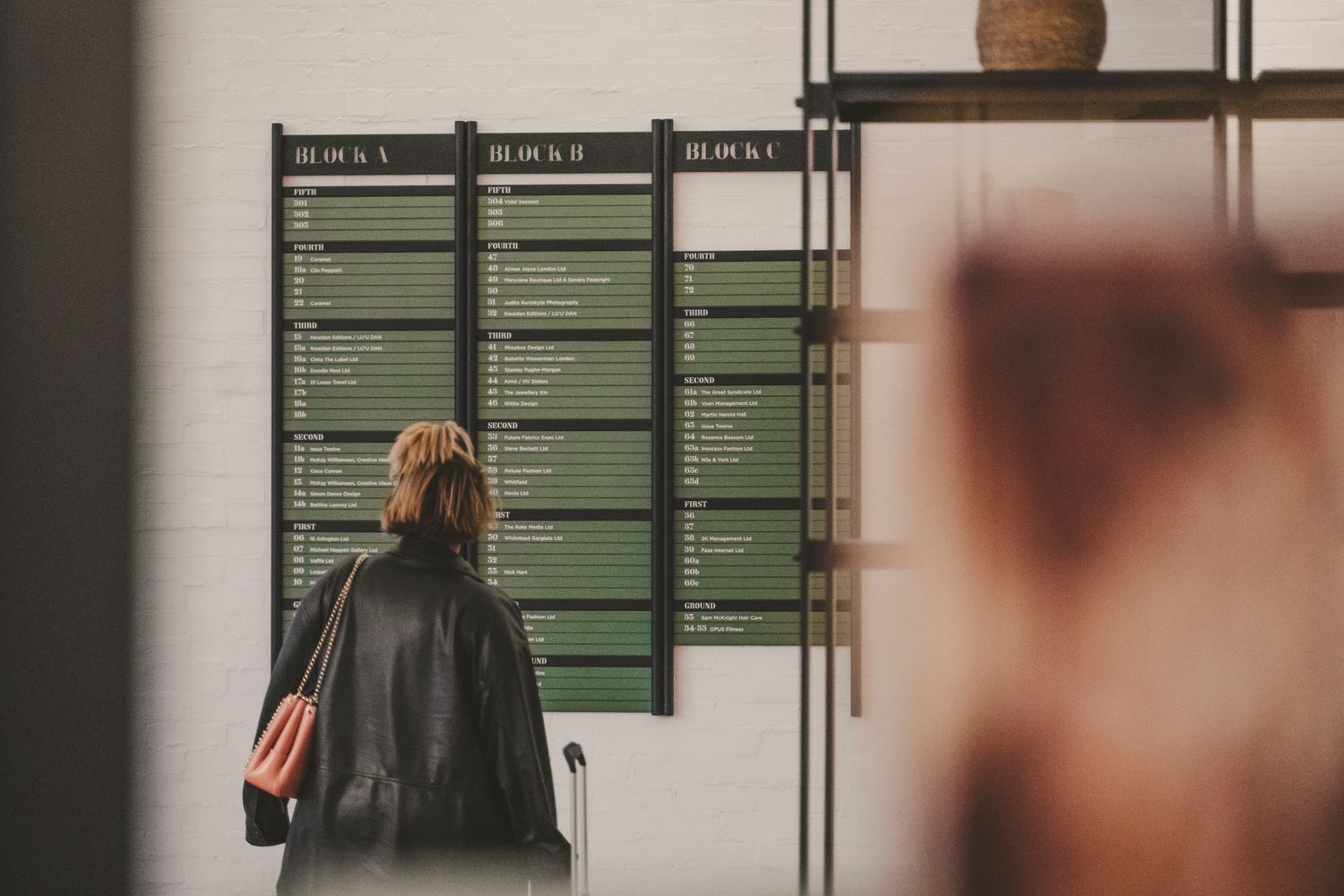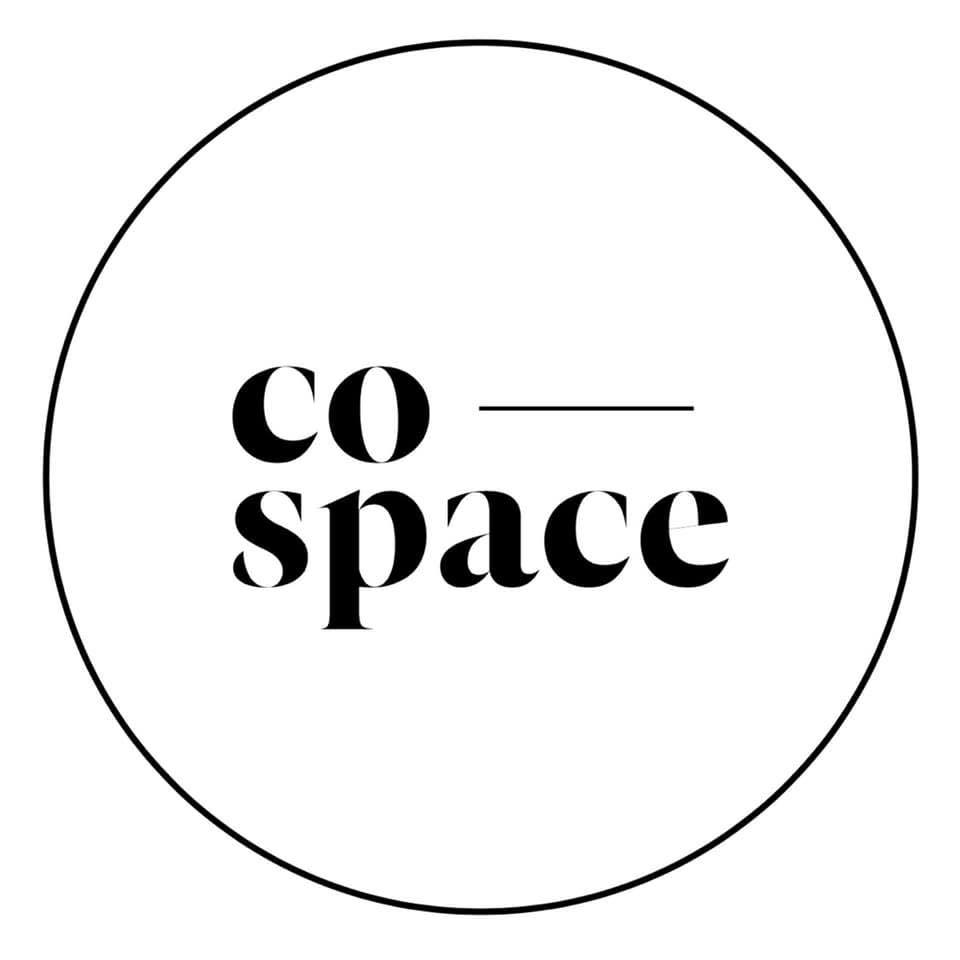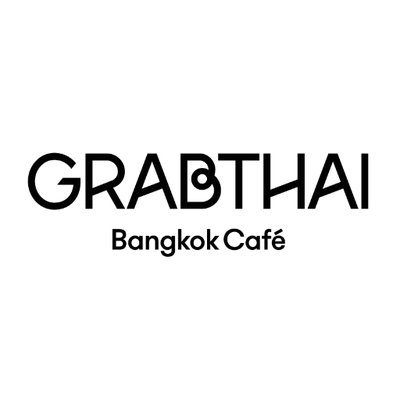Pall Mall by Workspace Wooden signs & hand painted wayfinding
A grand old building close to the bohemian hotspot that is Notting Hill, this branch of Workspace offers the perfect setting for creative thinking thanks to its surroundings and stunning interior. Named the Pall Mall Deposit because of its former life as a furniture depository in the 1900s, today the space is still furnished with some pretty nifty pieces – albeit for parking up on and pinging off emails, making for the comfiest of collaborative working.
When kitting out a new location, Workspace takes inspiration from the backstory of the building that’s undergoing transformation. So considering Pall Mall’s history, the coworking company decided to retain the period facade, restore original features on the inside, and most fittingly, utilise a joinery workshop to help refurbish the environment.
Theming the interior design with specialist wooden components such as a pergola ceiling and bespoke table tops, return client Workspace enlisted us to do things differently for their business too, calling upon our traditional signmaking skills to craft the finishing touches of industrial chic with wooden signs and hand painted wayfinding.
The brief asked us to develop Pall Mall Deposit’s wayfinding routes, interpret the architect’s aesthetics with artisanal signs, and implement a network of business signage through from production to installation.
First off we visited the site and mapped out clear, functional pathways to each destination, keeping the user base in mind. We built an informative, helpful, and easy to locate navigation system around that, tying the space together with directories, intercom signage, information signs, direction signs and room signs.
With designs that were minimalist in nature, using just one clean bold font in a variety of configurations and arrowhead icons as pointers, we were careful to lend a sense of simplicity to the signposting during the execution phase too. Striving to match the exposed architectural elements of Pall Mall Deposit, we emulated the natural textures present in the interiors within the build of the signage, joining heads with a specialist joinery company too.
We took the contemporary yet rustic finish as far as we could with our own woodwork, centring the wayfinding system around a bespoke directory built up out of slats, as well as birch faced unit plaques, which we laser-cut lettering or room numbers into and finished with a stain, applied to let the grain shine through.






Along with the wooden signs, there were subtle uses of cut vinyl but we consistently wove artistry into the fabric of the interior, with carefully placed pieces of hand painted signage, from little bits of brushed lettering on a rugged brick wall, to prominent and perfectly executed level numbers on the smooth render of each stair landing.
Overall, a big portion of the project was spent getting the materials right. Scoping out wood samples, colour matching and generally going down the specialist route presented a challenge due to long production times. In response, we scattered the phases of this project, jumping ahead in the pipeline to the hand painting side of things to allow us to progress towards completion while bits and pieces were still being made at the joiners. With a building so large and important, we brought on board every artisan signwriter we know and trust to scale the job and get it done well; keeping up the momentum, the supply of manpower and the standard of work.
From the gorgeous reception and in house café, to white washed corridors and pared back floor lobbies with piping, wiring and ductwork laid bare – we found a rhythm through each of these areas and harmonised their identities with earthy tones of reseda green, plasterboard pink and umber grey, imparting the perfectly human imperfections of hand painting on walls and wooden plaques alike. Though vastly different in purpose, the spaces have now been brought together with a cohesive architectural language, raw in style yet seamlessly functional, much like the Pall Mall Deposit building, which is once again flowing with footfall.























